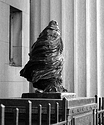The Rolleiflex is an entirely different mindset from today's hurdy gurdy, rush rush, immediate results attitude to quicky d-photography. Beware, tho, Rolleis can be very addictive.
If you buy a T and decide it isn't for you, nothing to stop you from selling it, very likely for what you paid for it. So no risk.
Rolleiflexes (and Contax Gs) are my favorite cameras. I bought my first (a 3.5E2) in 1966 and I still use it. My Rollei arsenal consists of two Ts, a 2.8E, and the 3.5E2, also a box of accessories. I acquired the black body Ts in the late 1970s in Australia, along with whatever Rollei bits I could afford at the time, two close ups, a few filters, a lens hood. Later added a prism. an ideal minimalist kit. Why two Ts? One for B&W, the other for color negatives.
The two Ts traveled to Asia in the 1980s, I shot heaps, sold a lot (stock). Used them for weddings in the 1990s. Put them away to play with d in 2001, but went back to them when I retired three years ago. Took them out of the bag, loaded them with film, went out and shot. Still worked perfectly.
In all the years I've owned them, one of my Ts needed a relatively minor repair to the lens setting adjustment, an inside tape broke, this was in the early 90s. A shop in Malaysia fixed it for me and did a CLA for A$50 (sigh, those were the days! quote/unquote). Otherwise I had the two cameras CLA'd in 1985 or so after several years of quite rough traveling in Asia, then checked again when I began to use them seriously for weddings, nothing was wrong with them at this later time. Since then, nyet repairs. By comparison, my Nikon DSLR, bought new in 2011, has had major servicing two times since, at hideous cost. Sure, film is more expensive than pixels, but what price reliability?
The T Tessars are not Planars, but just what does this mean? They are good lenses. Great lenses. Good contrast, fine mid tones. I have 16x20s on my walls from Rollei B&W and color negatives.
Ts are simpler cameras. No automat loading means film fewer stuff ups. Lens accessories are bayonet 1, still plentiful, not expensive. My Rolleipars (close up lenses) date to the 1940s and produce crisp images when used at f/11 or f/16. Sharp as anything.
A little known fact about the T is you can insert a 16 exposure kit, and get 16 4.5x6cm images on a 120 roll. With today's 120 film prices, this helps. Film-wise, I shoot HP5, Kodak Ektar and Ilford XP2, all ordered OL from a reliable seller in Australia. Not cheap, but affordable. Easily found in Singapore or Malaysia. there is even a photo shop in Brunei selling 120 roll film...
The prism is wonderful for ageing eyes. I paid A$200 for mine, eons ago, and have always considered it as an essential. Ebay has them, sometimes cheap.
Larger negatives mean more detail. Printing to 8x10 in the darkroom is a whiz. Even to 16x20, with a little care. Try 8x10s with 35mm negatives...
I nowadays regularly take a Rollei T kit (all in one bag) on field trips and mountain walks. Camera, prism, grip, small bits, five or ten rolls of 120 film (for 80 or 160 images). Not at all heavy. Used with care, I easily average 8/10 'keepers' with my Rollei images.
A home darkroom, or the bits and pieces to develop B&W films yourself, helps greatly and also reduces costs. Manual printing in the darkroom is somewhat slower than scanning, but much more satisfying to me, with good music and an occasional glass of beer to refresh the inner bod. In the enlarger, I can print 5x7s from sections of my Rollei negatives. Always pleased with the results.





